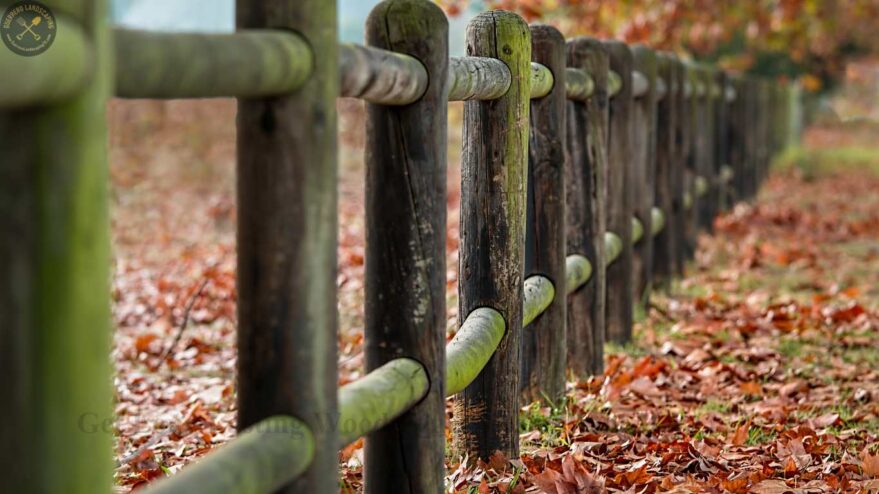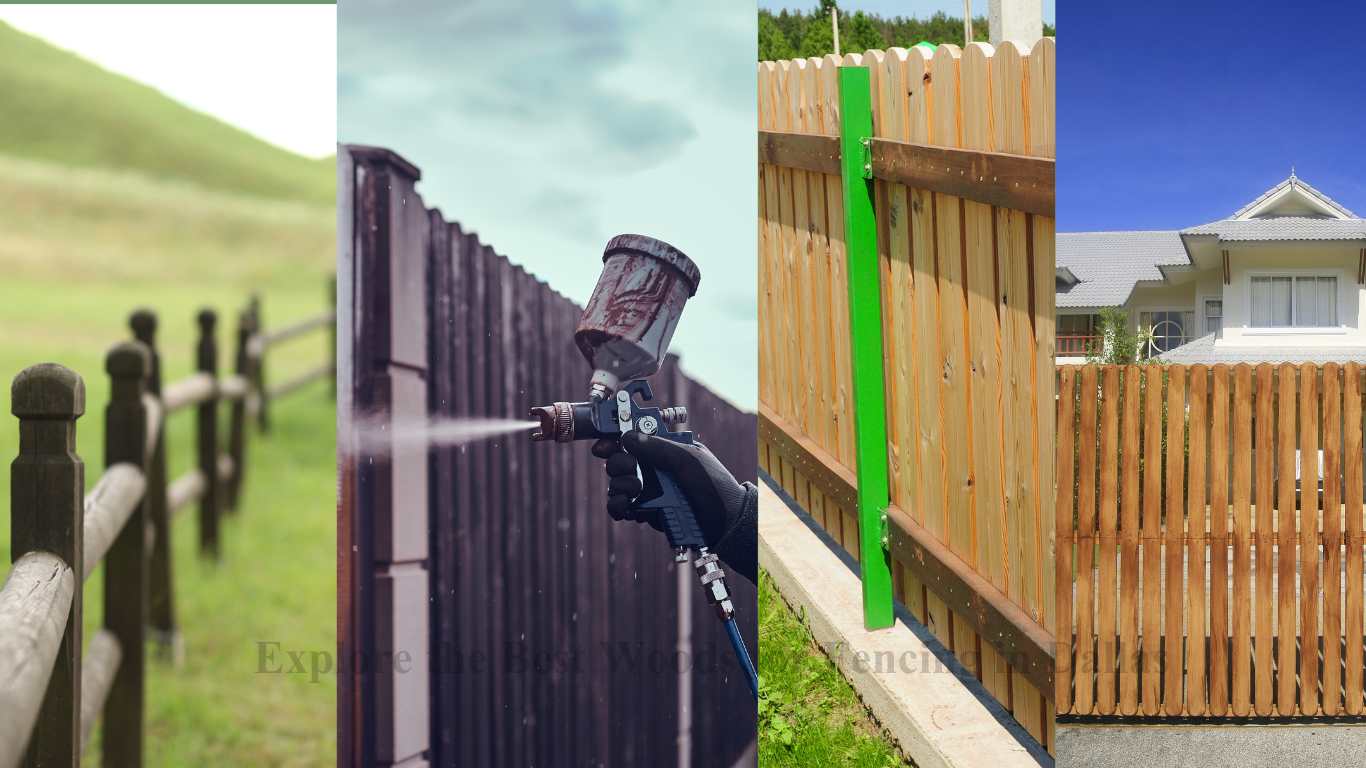Wood fence posts are popular for fencing in Dallas because of their natural appearance, versatility, and affordability. They fit in well with a range of environments, warming and humanizing homes. Could be wood posts, which lend themselves to everything from traditional picket fences and privacy fences and ranch fences that are as at home in the suburbs as in the country.
Cedar and pine are used everywhere because they are strong and won’t rot. Wood fence posts can last if kept up with Dallas’s fluctuating climate.
Why Choose Wood Fence Posts?
People tend to choose wood fence posts not only because of their classic designs but also because they are lightweight and stand out in a home or property. They are versatile enough to be useful in average households or large and sprawling farms in the countryside. The following points outline exactly why wood fence posts are the fencing system of choice:
Aesthetic Appeal: wood is better suited for its purpose and its aesthetic greatly surpasses that of fences made from other mediums. Stained or unstained wood always increases the eye of property.
Cost-Effective: wood is relatively cheaper than many other materials which can be a significant factor. In the U.S.A., wood is also very readily available which helps with the cost.
Customizable: Wood is easily manipulable and can be cut, stained, or painted to fit most fence configurations whether they be picket, privacy, split rail, or ranch-style fences.
Environmental Benefit: Wood does not deplete over time and it is much more environmentally friendly than vinyl or metal.
Explore the Best Woods for Fencing in Dallas
Given the hot summers, the sporadic rainfall, and the high humidity, the climate in Dallas needs woods with durability to sustain these conditions. Let’s take a look at the best options for fencing wood in Dallas:
1.Cedar
- Why Cedar? Cedar is naturally resistant to rot, decay, and bugs, which makes Cedar well suited to the climate in Dallas. Its internal oils discourage pests, and it performs well in both sunlight and rainfall.
- General coloration: Cedar has a red color, which deepens with age. If you want a certain color, the wood also stains nicely.
- Clear durability: With proper maintenance the Cedar fences can last for 15-20 years, thus making them the best choice for homeowners who need durability.
2. Spruce
Spruce is quite an economical choice for fence material especially for people who want a cheaper alternative that is stylish and functional. It is not as durable as the cedar or redwood, but it does have some qualities that make it suitable for fencing:
Benefits of Using Spruce for Fencing
- Cost-effectiveness: For homeowners looking to fence up but are short on finances, It is the most reasonable type of wood available for this purpose.
- Aesthetics: Light in color and straight in grain, It makes for a clean and iconic look ideal for both picket and privacy fence styles. It can also be overlaid with paint or stain as per available designs.
- Simple installation: Due to the construction of the wood, shapes, cuts, and installations are made easier and simpler as spruce is quite easy to handle.
3.Redwood
Why Redwood?
Because of its strength and natural propensity to resist insects and decay, redwood is quite effective in several environmental conditions including the humid and hot weather of Dallas.
- Appearance: Redwood has a rich red color that leaves the property with a nice look. This color can be left to age naturally or be treated so that its vibrancy does not fade.
- Longevity: Although expensive when compared to cedar or pine, a properly maintained redwood fence can last for at least 20 years.
4. Western Red Cedar
In the hot summers, and rainy days in Dallas, Western Red Cedar stands out as the best choice for a fence owing to its natural beauty and strength. Here are some points highlighting Western Red Cedar’s benefits:
- Natural Resistance to Fungal or Moisture Damage: This timber tends to be resistant to rot, decay, and moisture because of a higher concentration of natural oils and tannins. This makes it ideal for humid regions like Dallas as it can handle exposure to the rain and not rot.
- Strength and Stability: The fact that it is a stable wood also means that Western Red Cedar will shrink or enlarge with abrupt changes in temperature so that the fence stays up, straight, and structurally sound through the weather changes that are so familiar to the Dallas area.
Beautiful Appearance
Color and Grain: Western Red Cedar has straight grains that are fine in texture, making this timber very appealing. Its reddish-brown color tints make it an appealing surround. When it matures, it also develops a silver-grey color which contributes to its aesthetic value.
Sealed cedar seems stowed away for a warm hue whereas untreated cedar provides a rustic appearance. Fortitude in Dallas Climate.
In Dallas, a Western Red Cedar fence can be used for a period of 15-20 years or more. One should apply a sealant or stain on a period of every few years as a way to improve its strength.
Wood Fence Installation Guide
The construction of a wooden fence requires some essential steps so that it can be steady, strong, and also looks good. Here’s a concise guide to follow for getting a wooden fence built:
1. Plan the Layout
Start by checking boundaries or else you will run into boundary problems in the future. Choose a style and height appropriate for your needs as well as local height restrictions. Use pegs and string to mark out the fence line and where the posts will be fixed. Posts should be about 6-8 feet apart.
2. Gather Materials and Tools
Basic materials are fence posts, boards, nails, gravel, concrete, and sealant for those who want it. Also required are tools like a hole digger, a level, a circular saw, and a drill.
3. Dig Post Holes
Each post should be buried by its length by approximately 1/3 with each hole measuring 2-3 feet in depth. Gravel should be placed at the level of 4-6 inches above the soil for proper drainage and it also helps to protect the wood from moisture.
4. Set the Posts
Insert each post within its hole and ensure that it is straight and leveled as well as aligning the post by pouring quick-setting concrete around the base of each post which needs to be allowed to cure fully as per the manufacturer’s instructions.
5. Attach Horizontal Rails
Put in place 2-3 horizontal rails between the posts ensuring that they are anchored at different heights and that they are equally spaced out from each other. Make sure that each rail is firmly secured to create a frame for fixing the fence boards.
6. Install Fence Boards
Use nails to attach vertical boards on the rails making sure they are in line and evenly spaced for semi-private fences, while for privacy fencing attach boards with no gaps in between.
7. Finishing Touches
Cut all the posts to the desired height so that they can all look uniform, and use weatherproof stains or sealants to protect all the wooden portions from water, heat, and insects. In the right conditions, wood fences can enfold an elegant and benevolent appearance for your land within a reasonable time.
Customizations for Your Wooden Fence
Such a type of fencing should not be pure and unadorned as wood fences can be tailored to fit most properties, providing creativity and practicality. Below are some of the customization features that are most favored.
1. Post Caps in Decoration Deletes
Post caps as a finishing touch can assist feebly in decorating a wood fence. The designs vary greatly: from flat caps to fancy flat caps which have some metal/solar designs incorporated. As an illustration, sloped post caps provide a warm glow when it is dark which can add some beauty as well as serve a purpose. Wood, metal, copper, and glass are common materials, with each bringing its versatility to the aesthetics. Moreover, the post caps can provide weather resistance to the tops of the posts which serves as good aesthetics.
2. Available in Custom Design Are Gates
The use of wood fence gates automatically adds increased convenience, security, and beauty to a wood fence. Homeowners can have gates that meet their needs such as a large, thick double door closer to the driveway or a small gate into a garden. Some custom-built fences have the above-segment arched tops in the outside range and generally complement the fence in terms of hardware handles and hinges. In addition, it is possible to use decorative implements such as lattice, metal insertions, or some carved wooden details for custom gates.
3. Staining and Painting
Painting or staining helps to preserve the wood from the elements and it enhances the appearance of the wood. Stains run the gamut from natural light wood tones. Stains also soak into the wood and offer protection from UV rays, moisture, and insect attack for decades. If a bright finale is wanted and it’s quite feasible to make any color to match the house or the landscape around.
Homeowners can design a wood fence that performs a practical purpose yet.It is also an individual, desirable, feature of the property, with all of these customizations.
Wood fence maintenance in Dallas climate
It only takes a little more attention to maintain a Dallas wood fence because of the hot, humid summers and sometimes winter freezing. So that your fence will stay in top shape all year round, consider these maintenance tips.
1. Regular Cleaning
Even wood is prone to mold and mildew in Dallas’s humid climate. ‘Wash your fence with a diluted detergent and water and a soft-bristled brush every six months to a year. Pressure washing will also work, but it must be done lightly lest one ruin the wood.
2. Staining and Sealing
You’ll need to seal and stain to help keep your wood fence protected from Dallas’s scorching sun and humidity. Every 2-3 years, use a UV-blocking stain and a water-repellent sealer. This prevents the wood from fading, warping, and cracking. Choose stains containing mildewcide in them for added mildew control.
3. Inspect and Repair Regularly
Check your fence regularly for damage, such as loose boards, nails or screws. Dallas summers could swell wood and winter could shrink it. Secure or replace any moving part to avoid its loss and reduce further wear.
4. Trim Vegetation
Crawling plants and bushes trap moisture next to the wood, encouraging mound and rot. Mow grasses and pull vines or branches that reach for, or tear down the fence.
5. Ensure Proper Drainage
Dallas storms can bring heavy rainfall, so make sure water doesn’t pool around your fence posts. And if drainage is bad, the bottoms of the posts will rot. Gravel/soil slope to drain water from the fence.
6. Winter Preparation
Even though it is temperate in Dallas during the winter, sometimes it gets really cold. Avoid using metal shovels to clear ice or snow off the fence to prevent scratching, and check for any signs of frost damage.
Following these maintenance guidelines, your wood fence will remain strong against Dallas’ weather and will look good all year round.
Affordable wood Fence Repair in Dallas
Affordable wood fence repair in Dallas is available for homeowners looking to restore their fences without breaking the bank. Town repair services offer solutions for everything from boards that are splintered or bent and posts that droop to weather damage caused by Dallas’s hot summers and the occasional storm.
The majority of contractors focus on cost-effective fixes, such as board replacements and re-staining and sealing, to prolong the life and enhance the visual appeal of the fence. Experienced local builders ensure repairs that comply with Dallas codes and are suitable for the local climate. Competitive pricing, same-day service, and affordable wood fence repair allow homeowners to maintain home equity and curb appeal.
Best long-lasting wood fences
Solid wood fences are beautiful, long-lasting, functional, and aesthetic barriers to any property. To ensure longevity, the choice of wood is essential. Cedar and redwood are common choices since both are inherently resistant to rot, bugs, and decay. Pressure-treated pine is another economical choice, pumped with preservatives that help prevent moisture and insect damage.
And a fine wooden fence requires all this care to maintain its immaculate state. A protective coat of stain or seal every two- or three years ward off Dallas’s scorching sun, hot, moist air, and the occasional torrential downpour that can crack or warp it. Sealing and staining reveal the wood’s beauty as well, as the longer it endures.
To ensure longevity, it is crucial to construct the fence with durable fasteners, such as gal or stainless-steel nails that won’t rust and compromise the structural integrity. Correct installation practices, such as setting posts in concrete and proper drainage, avoid early failure due to moisture.
By choosing durable wood types, applying routine maintenance, and using quality materials, homeowners can enjoy a wood fence that withstands environmental wear and tear, enhancing property value and aesthetic appeal for many years.
Conclusion
Wood fence posts are popular for their natural appearance, affordability, and versatility. They last a lifetime and add value to property when properly placed and cared for. Wood fenceposts are still used for seclusion, property identification, and beauty in all regions, including Dallas, where their durability and aesthetic appeal have made them the favored option of many property owners.
Frequently Asked Questions (FAQs) that you may want to know.
What type of wood is best for Dallas’s climate?
- Cedar and Redwood are suitable for Dallas’s hot and humid weather due to their natural resistance to pests and decay.
How long do wood fences typically last?
- Proper maintenance means Cedar or Redwood fences can last around 15-20 years.
How do I maintain a wood fence?
- Regular cleaning, sealing, or staining every 2-3 years and repairing any damaged sections can extend the lifespan of a wood fence.
What type of sealer or stain is best for a wood fence?
- A UV-resistant and water-repellent sealer or stain is recommended, which protects the wood from sun damage and moisture.
Is a permit required for a wood fence in Dallas?
- In Dallas, fences over 6 feet high may require a permit. It’s best to follow local regulations.
What is the cost of installing a wood fence?
- In Dallas, the average cost of a wood fence ranges from $15 to $45 per linear foot, depending on the type of wood and design.
Can wood fences withstand Dallas’s climate?
- Yes, with the right choice of wood and regular maintenance, wood fences can last well in Dallas’s weather.
What type of posts should be used for wood fences?
- Cedar or pressure-treated pine posts are recommended to resist pests and rot.
What height is ideal for a wood fence?
- A 6- to 8-foot fence is suitable for privacy and security purposes.
Are wood fences environmentally friendly?
- Yes, wood is a renewable resource and, if sourced responsibly, is an eco-friendly option.
Can wood fences resist insect attacks?
- Cedar and Redwood are naturally insect-resistant, while pressure-treated pine is another good option.
Do wood fences help in noise reduction?
- Yes, wood fences can reduce noise, though they are not soundproof.
Can wood fences be customized in design?
- Wood fences can be customized in various styles, such as picket, privacy, or split rail designs.
Can wood fences be painted?
- Wood fences can be painted or stained in different colors to match the landscape or home.
What kind of foundation is needed for a wood fence?
- Concrete foundations are recommended for posts to ensure stability and durability.




